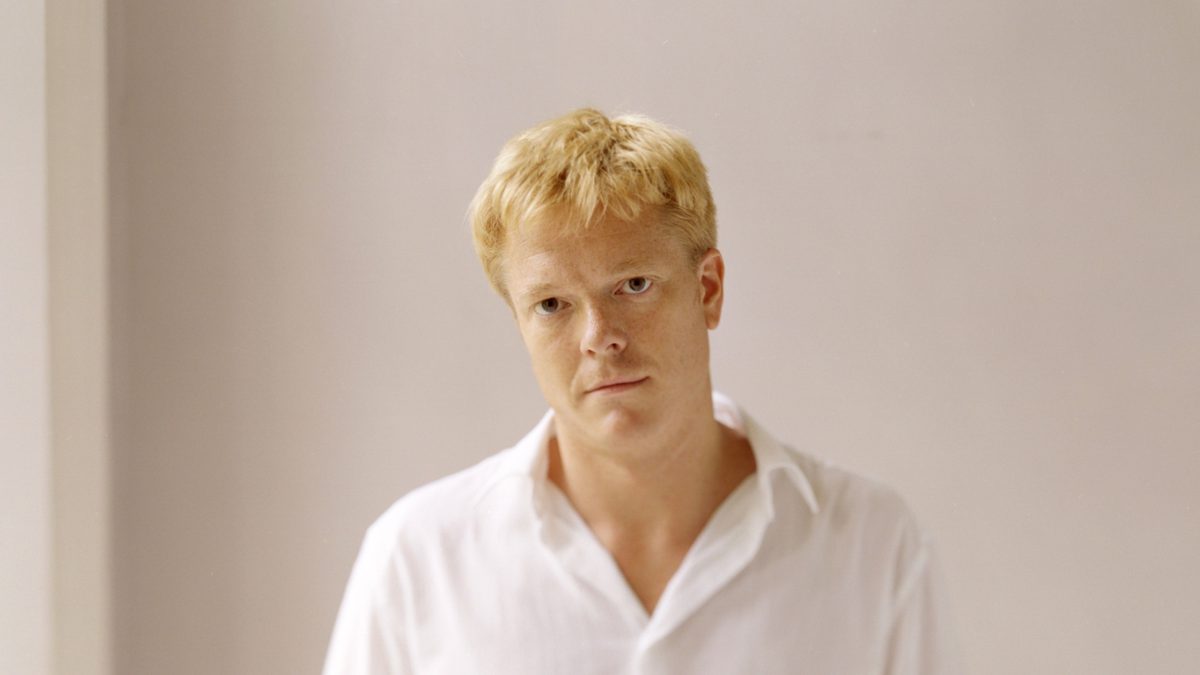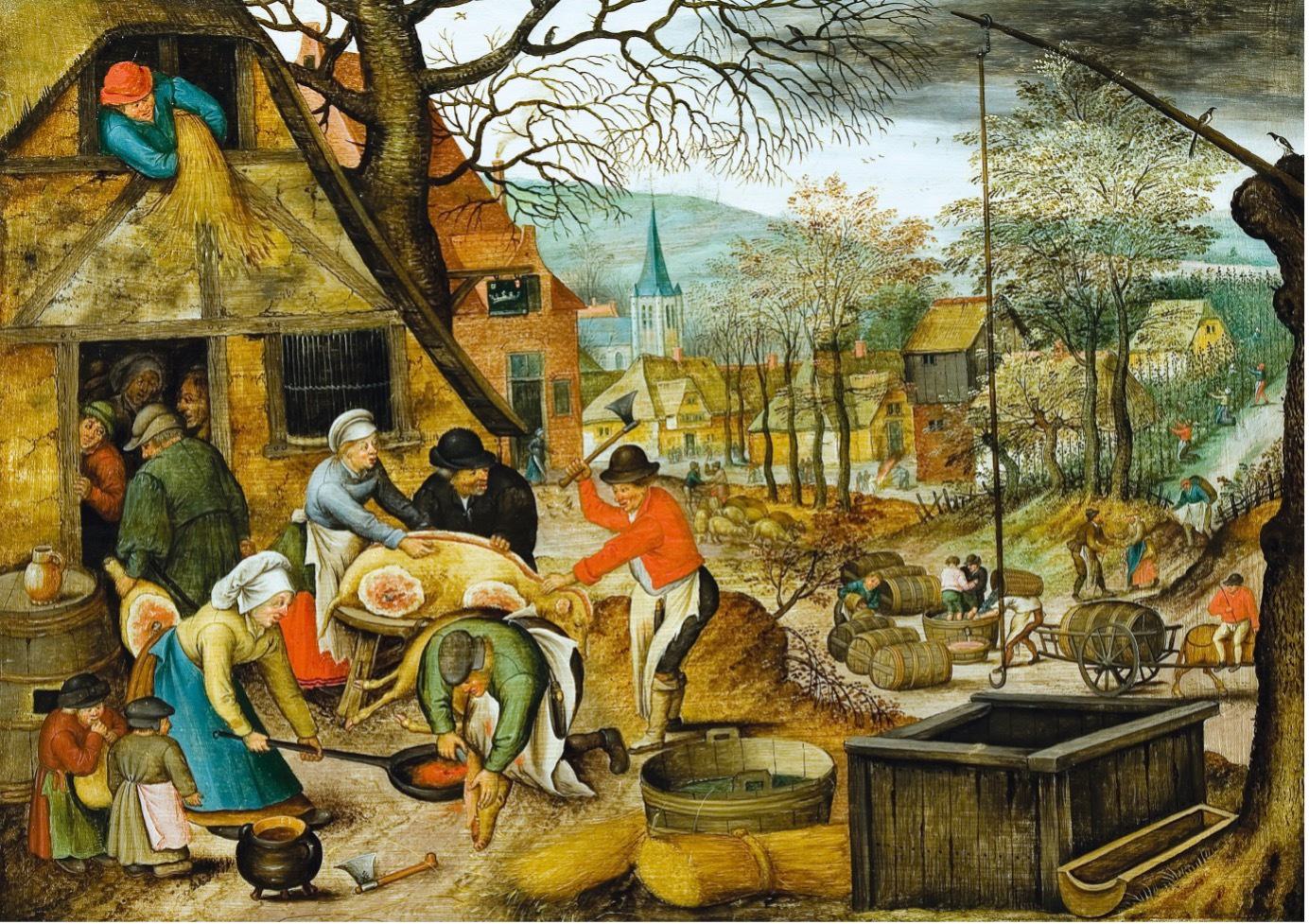
The Wanderer / Au Naturel
28 October 2023, 7:30pm - 9:30pm
Please click here to download the Texts & Translations for this event.
What to expect Two concerts in one evening! In the Holywell Music Room, Toby Spence and Sholto Kynoch perform songs by Franz Schubert, inspired by the quintessential Romantic artist Caspar David Friedrich, in particular his iconic ‘Wanderer over the Sea of Mist’. Meanwhile in the stunning University Church, enjoy the glorious sound of I Fagiolini as they present a specially devised programme in response to Pieter Brueghel the Younger’s cycle of paintings, The Seasons.
You'll get to see both concerts, swapping locations during the interval! (please check your ticket carefully and note which venue you start in). At the end of the evening, all are warmly invited for a celebratory drink in the University Church, to mark the end of this year’s Festival.
The Artists Diapason recently described Toby Spence as 'breathtaking with vocal health, intelligence in the sculpture of words, consumed by the composition.’ I Fagiolini, founded and directed by Robert Hollingworth, have been described by The Guardian as ‘a superb ensemble, outstanding in their range and versatility’, and by The Spectator as ‘the Holy Grail of concert-going’!
Festival passes are the best way to experience the Festival. Save over 25% compared to buying individual tickets, and get access to more than 60 events (some venues have limited capacity so are excluded). Scroll down to book, or for more information click here.
Programme
- Franz Schubert (1797 - 1828)
- Gretchen am Spinnrade (1814) D118
- Im Walde „Waldesnacht“ (1820) D708
- Der Lindenbaum (1827) from Winterreise
- Das Wirtshaus (1827) from Winterreise
- Einsamkeit (1827) Op. 90 no.5 1–5.viii.1850 from Winterreise
- Totengräbers Heimweh (1825) D842
- Über Wildemann (1826) D884
- An den Mond in einer Herbstnacht (1818) D614
- Licht und Liebe (1816) D352
- Johannes Brahms (1833 - 1897)
- Im Herbst
- Kenneth Leighton (1929 - 1988)
- God's grandeur
- Adriano Banchieri (1568 - 1634)
- Excerpt from ‘Il Festino sul Giovedì Grasso’ (Little Carnival Party)
- Francis Poulenc (1899 - 1963)
- Un soir de neige
- Herbert Howells (1892 - 1983)
- Summer is coming
- Clément Janequin (1485 - 1558)
- La chasse
- Léo Ferré (1916 - 1993)
- Chanson d'automne
Notes on the Programme
Brueghel’s Four Seasons
The Four Seasons was an established subject for paintings in 1624 when Pieter Brueghel the Younger (in the highly lucrative studio the artist had inherited from his famous father, Pieter Breughel the Elder) painted one of the two full sets that are known to have survived. The series suggestively illustrates the passage of time and the cycle of life and was sold recently at Christie’s for the grand price of £6,466,500.
The painter’s father, also Pieter, was the renowned pioneer of depictions of peasant figures in rural settings. He painted one magnificent series of 6 canvases that paired the 12 months: these are now dispersed across various major galleries. Father Brueghel had also planned designs for engravings of the Four Seasons, but when he died in 1569 he had finished only two. The set was completed with designs by Franz Bol. It was these engravings that provided the close templates for Pieter the Younger’s highly popular paintings, which were sold in sets and individually.
Educated patrons, of the kind who ordered and purchased the paintings by father and son, would have known that the seasons were an integral part of the 4-part scheme that involved the elements, the humours, the human temperaments, and the ages of life:
Air: blood, the sanguine temperament, youth and spring;
Fire: yellow bile, the choleric temperament, maturity and summer;
Earth: black bile, the melancholic temperament, old age and autumn;
Water: phlegm, the phlegmatic temperament, decrepitude and winter.
Pieter the Elder was a friend of Abraham Ortelius, the great geographer and master both of map-making and the human geography that determined economic and social life. Ortelius’s epitaph for Pieter the Elder imagines ‘Nature’s fear’ that Brueghel’s ‘ingenious artifice in imitation would bring her into disrepute’!
Pieter the Younger’s paintings of the Four Seasons are full of varied visual delights – lyrical, natural, wryly humorous, satirical and ribald – qualities that would have been well appreciated by their sophisticated owners. In the foreground we see seasonal tasks being performed with rustic grandeur and a clumsiness that verges on the heroic, as peasants battle and collaborate with the elements that drive the seasonal changes. The mid-ground provides a stage for various pursuits, not least merry-making, and the actions of importunate men. In the background we catch cunning glimpses of sprightly trees, both wild and cultivated, small townships dominated by church and castle, meandering rivers, and distant hills, atmospherically blue. Overarching these inviting details is nature itself and what each successive season inexorably delivers. The paintings are both a hymn to the majesty of nature in its whole and parts, and a prayer for its cooperative generosity in human affairs.
The pictorial skills of the younger Brueghel were of a high order. His brush-work is sketchier, more open and less highly finished that that of his father, and his paintings are on a smaller scale. His colouristic range is more limited, with a preference for overall colour schemes that feel natural. The few strong notes of colour, such as red jackets, stand out forcefully. Comprising four generations of artists, the Brueghels created a family firm that endured well into the later 17th century. Pieter the Elder’s direct son was the painter who most closely reflected his father’s genius for peasant scenes.
These paintings are mere arrays of pigments in binders on flat panels. They ape things that are seen, yet we can feel
the temperatures, smell the air and discern the odours, hear sounds of labour and the ringing voices of men, children, animals and birds.
© Martin Kemp
AUTUMN: A dark tree has already shed its leaves, while others are more resistant to the advancing season. Butchers pursue their brutal craft with a crashing axe, and fat legs of meat are readied for curing. A woman with a pan collects blood from a slit neck. A man with a red hat drags a sheaf of wheat into dry storage in the loft of the tavern. Down the hill two men’s feet stomp grapes to fill waiting barrels. (Viniculture was more prolific than we might assume in northern climes.) The grey spire of a pale church reminds everyone of God’s will.

WINTER: Hills and roofs are shrouded by blankets of white snow, while more precipitation is darkly threatened from a streaky cloud. A woman with a dark cloak seems to be purveying warm chestnuts. Down the hill, we witness high jinks on the slippery ice, involving put-upon women and assertive men. Groups in the upper floor of the large hostel to the right try to keep warm. In the right foreground one man has fallen into the icy waters with potentially disastrous consequences.

SPRING: The labourers in the foreground tend a garden of geometrical beds in the French style, presumably attached to a large, formal house. Two men wield keen-edged spades that cut into and level the rich soil. Energetic little plants in earthen bowls await tender planting by stooping women. Sparkling blossoms adorn new-leaved trees. Sheep are sheared, yielding baskets of springy wool, while men on ladders prune vines that are trained over a tunnelled trellis. Across the river, the softer days are celebrated by outdoor dancers.

SUMMER: A golden profusion of ripe wheat in dense blocks is harvested by honed blades of long scythes swung by anonymous men – posed mid-action like peasant Michelangelos. One of the scythers, with a manly cod-piece between splayed thighs, drinks urgently from a rotund vessel (of wine?) as the sun begins to set on his daily labours. A woman to the right bears colourful fruits in a shallow basket that conceals her face, while others transport sheaves of grain and winnow the few dropped ears. A distant waggon, piled with sheaves, labours up the steep hill.





